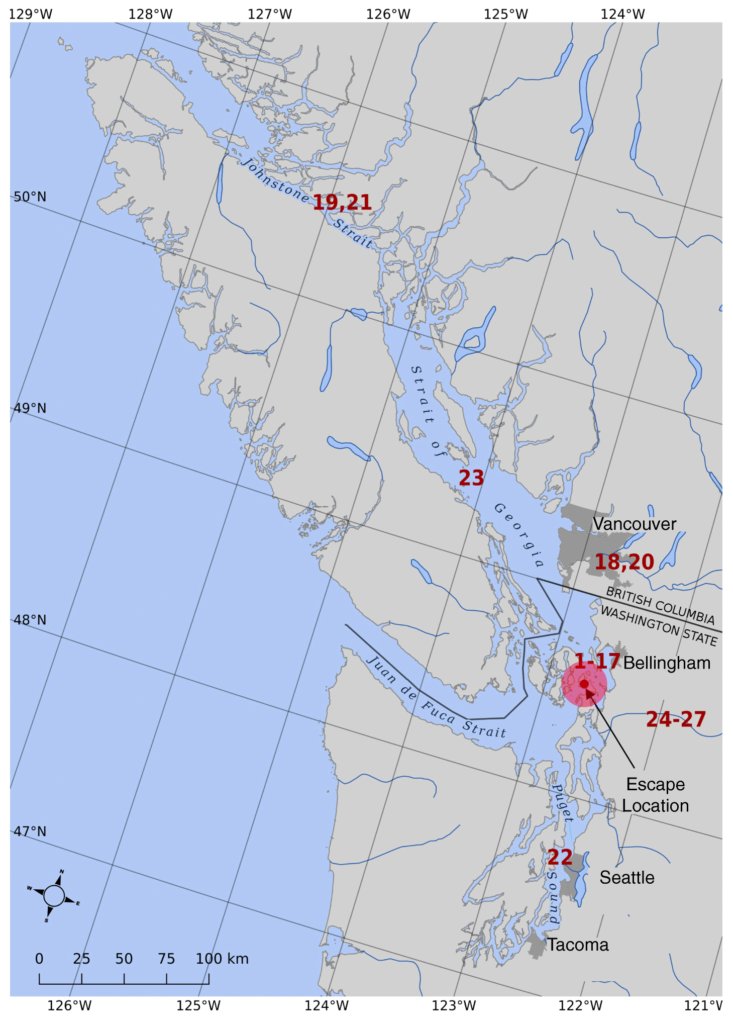Study confirms fears that escaped Atlantic salmon infected with exotic virus

5 May 2019 (Wild Fish Conservancy) – A peer-reviewed paper has been published in Virology Journal showing showing that the strain of Piscine Reovirus (PRV) found in escaped farmed Atlantic salmon in Puget Sound and British Columbia originates from Iceland, where the eggs that supply the net pens are sourced.
The study is co-authored by a group of experts in the field of animal biology and virology, as well as two of WFC’s own: Executive Director Kurt Beardslee and Aquatic Ecologist Dr. Nick Gayeski.
The research confirms long held fears that the significant majority of Atlantic salmon that escaped from the Cypress Island net pen collapse were likely infected with this exotic virus. PRV is highly contagious and was recently shown to cause potentially lethal side effects in Pacific salmon.
These finding indicate the need for the Washington Department of Wildlife to start regular testing of operating pens for the presence of this exotic virus.
Wild Fish Conservancy on Facebook
ABSTRACT: Piscine orthoreovirus (PRV) is an emergent virus in salmon aquaculture belonging to the family Reoviridae. PRV is associated with a growing list of pathological conditions including heart and skeletal inflammation (HSMI) of farmed Atlantic salmon. Despite widespread PRV infection in commercially farmed Atlantic salmon, information on PRV prevalence and on the genetic sequence variation of PRV in Atlantic salmon on the north Pacific Coast is limited.
METHODS: Feral Atlantic salmon caught in Washington State and British Columbia following a large containment failure at a farm in northern Puget Sound were sampled. Fish tissues were tested for PRV by RT-qPCR assay for segment L1 and conventional RT-PCR for PRV segment S1. The PCR products were sequenced and their relationship to PRV strains in GenBank was determined using phylogenetic analysis and nucleotide and amino acid homology comparisons.
RESULTS: Following the escape of 253,000 Atlantic salmon from a salmon farm in Washington State, USA, 72/73 tissue samples from 27 Atlantic salmon captured shortly after the escape tested PRV-positive. We estimate PRV-prevalence in the source farm population at 95% or greater. The PRV found in the fish was identified as PRV sub-genotype Ia and very similar to PRV from farmed Atlantic salmon in Iceland. This correlates with the source of the fish in the farm. Eggs of infected fish were positive for PRV indicating the possibility of vertical transfer and spread with fish egg transports.
CONCLUSIONS: PRV prevalence was close to 100% in farmed Atlantic salmon that were caught in Washington State and British Columbia following a large containment failure at a farm in northern Puget Sound. The PRV strains present in the escaped Atlantic salmon were very similar to the PRV strain reported in farmed Atlantic salmon from the source hatchery in Iceland that was used to stock commercial aquaculture sites in Washington State. This study emphasizes the need to screen Atlantic salmon broodstock for PRV, particularly where used to supply eggs to the global Atlantic salmon farming industry thereby improving our understanding of PRV epidemiology.
Piscine orthoreovirus sequences in escaped farmed Atlantic salmon in Washington and British Columbia
